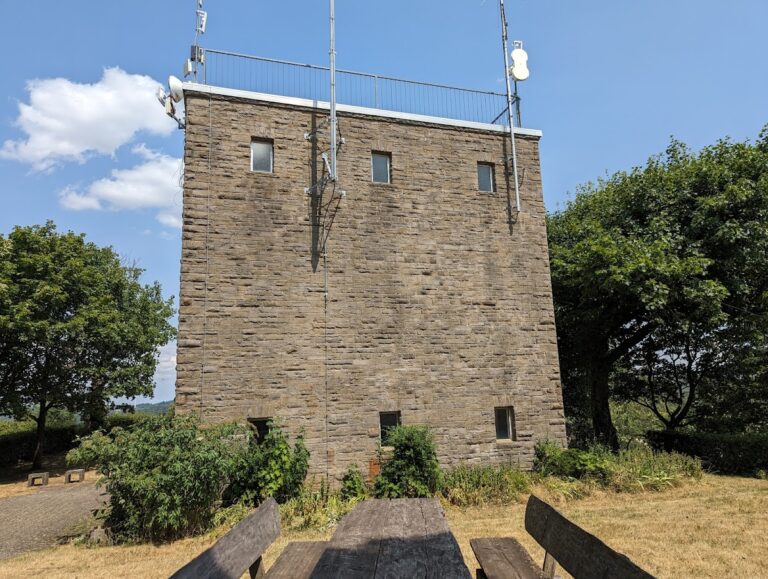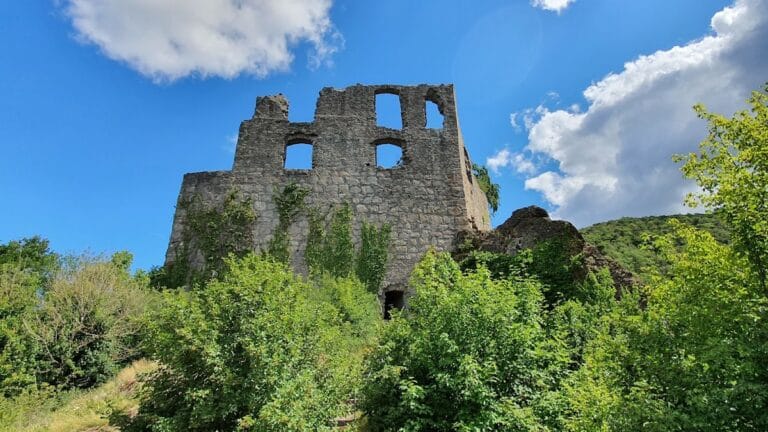Hof Iben: A Medieval Water Castle in Fürfeld, Germany
Visitor Information
Google Rating: 4.3
Popularity: Very Low
Google Maps: View on Google Maps
Official Website: www.regionalgeschichte.net
Country: Germany
Civilization: Unclassified
Remains: Military
History
Hof Iben is a historical water castle originally established by the Knights Templar in the settlement of Fürfeld, located in present-day Germany. The first known record mentioning Hof Iben dates back to 1258, confirming its association with the Templar order during the medieval period.
The origins of Hof Iben likely trace to the aftermath of the Third Crusade, after which Templar knights, expelled from Palestine, founded the site. The name “Iben” appears to derive from “Ibenium,” the Latin term for the Crusader fortress of Ibelin, destroyed in 1191. This naming reflects a transfer of heritage, linking this German site to their former stronghold in the Holy Land.
Around 1240, a significant phase of construction gave rise to the Gothic choir of the castle chapel, demonstrating early adoption of High Gothic architectural styles in Germany. Prior to this, the site featured a Romanesque-style nave, evidenced by capitals dating from approximately 1180 to 1220, indicative of an even earlier foundation period. The original Romanesque nave would remain until its demolition in the nineteenth century.
Following the dissolution of the Templar order in 1312, ownership passed to the noble family of the Raugrafen of Altenbaumburg. In 1362, the castle came into the possession of the Marschälle of Waldeck, who retained control until their line ended in 1553. Subsequent ownership transferred to Daniel V. von Mudersbach and then through inheritance to the Cronberg family. The Cronbergs were born on the estate and served as local feudal lords over Fürfeld for generations.
During the Thirty Years’ War era, specifically in 1638 and 1639, Hof Iben provided refuge to Justus Wilhelm Nigrinus, a Lutheran pastor expelled from nearby Kreuznach. After the extinction of the Cronberg family, ownership of the estate and chapel passed to the Catholic Schenk von Schmidtburg family, marking a shift in religious stewardship of the property.
In the late 18th century, the outlaw Johannes Bückler, popularly known as “Schinderhannes,” committed a theft of food from a French supply wagon at Hof Iben. He was briefly apprehended on the site but released by an Austrian cavalryman. Later, in 1812, Franz Joseph Nepomuk Ignaz Schenk von Schmidtburg auctioned the estate, leading to its acquisition by local peasants.
The chapel, separated from surrounding agricultural land in 1870, was purchased by the state of the Grand Duchy of Hesse. Today, it remains under the care of the modern German state of Rhineland-Palatinate.
Remains
The remains of Hof Iben offer a glimpse into the structure of a medieval water castle, though only fragments of the original complex survive. The site was built with a system of moats supplied by the Appelbach river, which was dammed below the nearby village of Tiefenthal. Water was channeled through an upper moat linked to an adjacent watermill. This mill may have either predated the castle or been constructed concurrently, playing a role in the water management essential for the site’s defenses.
The most prominent surviving element is the Gothic choir of the former castle chapel, constructed around 1240. This space forms a vaulted polygon with five-eighths of its circumference enclosed, featuring a cross-ribbed vault — a form of ceiling supported by intersecting stone ribs. Above the roof sits an octagonal turret capped with a stone pointed roof, often referred to as a “helmet.” The detailed stonework around the windows, ribs, arches, and leaf-shaped capitals link this chapel stylistically to the workshop responsible for the Naumburg Cathedral and Mainz Cathedral, both known for advanced Gothic designs.
Attached originally to this choir was a Romanesque nave, which was removed in the nineteenth century. Evidence of this earlier segment survives in two Romanesque capitals found on site, dating from the late twelfth to early thirteenth century, highlighting the chapel’s development through different architectural traditions.
Together, these features establish the chapel as one of the earliest examples of French cathedral Gothic style introduced into Germany, comparable to the Marburg Elisabethkirche and Trier Liebfrauenkirche. The presence of such high-style architecture in a relatively small settlement is attributed to the Knights Templar’s extensive European network, which facilitated the transfer of artistic and architectural influences.
Archaeological investigations have confirmed these structural elements, linking the surviving fragments to multiple phases of construction and use. Although the full extent of the water castle is only hinted at by remaining ruins, the combined features provide valuable insight into the site’s historical role, defense mechanisms, and architectural significance.







